Welcome to the world of 5 gallon bucket gardening. It’s great for city folks wanting to grow their own food in tiny spaces. You get the perks of container gardening, like being flexible and growing food all year.
With 5 gallon bucket gardening, you can grow many veggies, fruits, and herbs. You don’t need a big yard to start. This guide will show you how to set up and care for a bucket garden. We’ll focus on 5 gallon bucket gardening and container gardening.
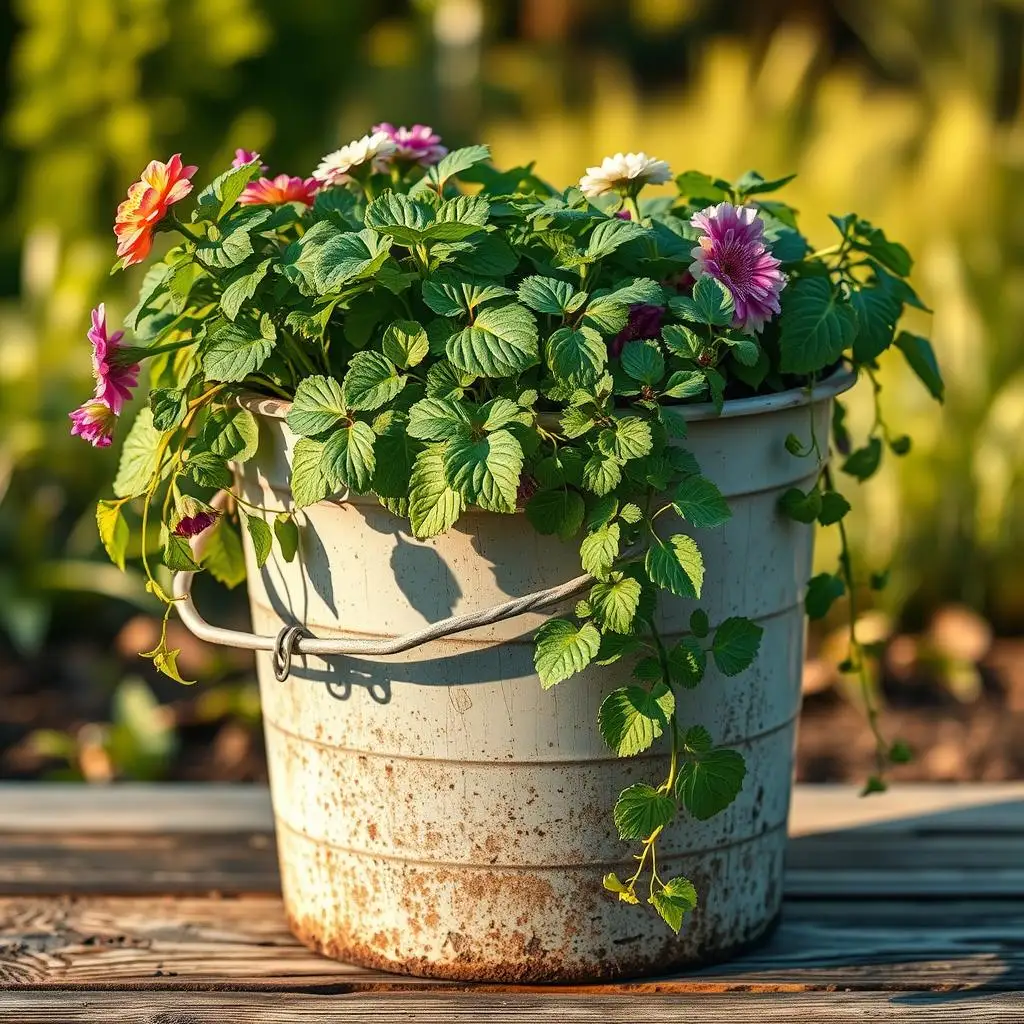
Introduction to Bucket Gardening
Container gardening, like 5 gallon bucket gardening, has lots of benefits. It saves space and is affordable for growing your own food. This guide will give you the advice and ideas you need to start your bucket garden.
Key Takeaways
- You can grow a variety of plants using 5 gallon bucket gardening and container gardening.
- 5 gallon bucket gardening is a space-saving and cost-effective way to grow your own food.
- You can enjoy year-round production with 5 gallon bucket gardening.
- Container gardening, such as 5 gallon bucket gardening, is perfect for urban growers.
- 5 gallon bucket gardening is a flexible way to grow your own food, whether you have a small patio, balcony, or backyard.
Why 5 Gallon Bucket Gardening Is Perfect for Urban Growers
As an urban gardener, you face the challenge of limited space. But, what if you could grow a garden in the smallest areas? 5-gallon bucket gardening is a space-saving solution for urban gardening. It lets you grow various plants on balconies, patios, or in small backyards.
5-gallon bucket gardening is also cost-effective. You can find these buckets at a low cost or even for free. This makes it an affordable way to start your urban gardening journey. Plus, the buckets are mobile and flexible. You can move them to catch the best sunlight or bring them inside during harsh weather.
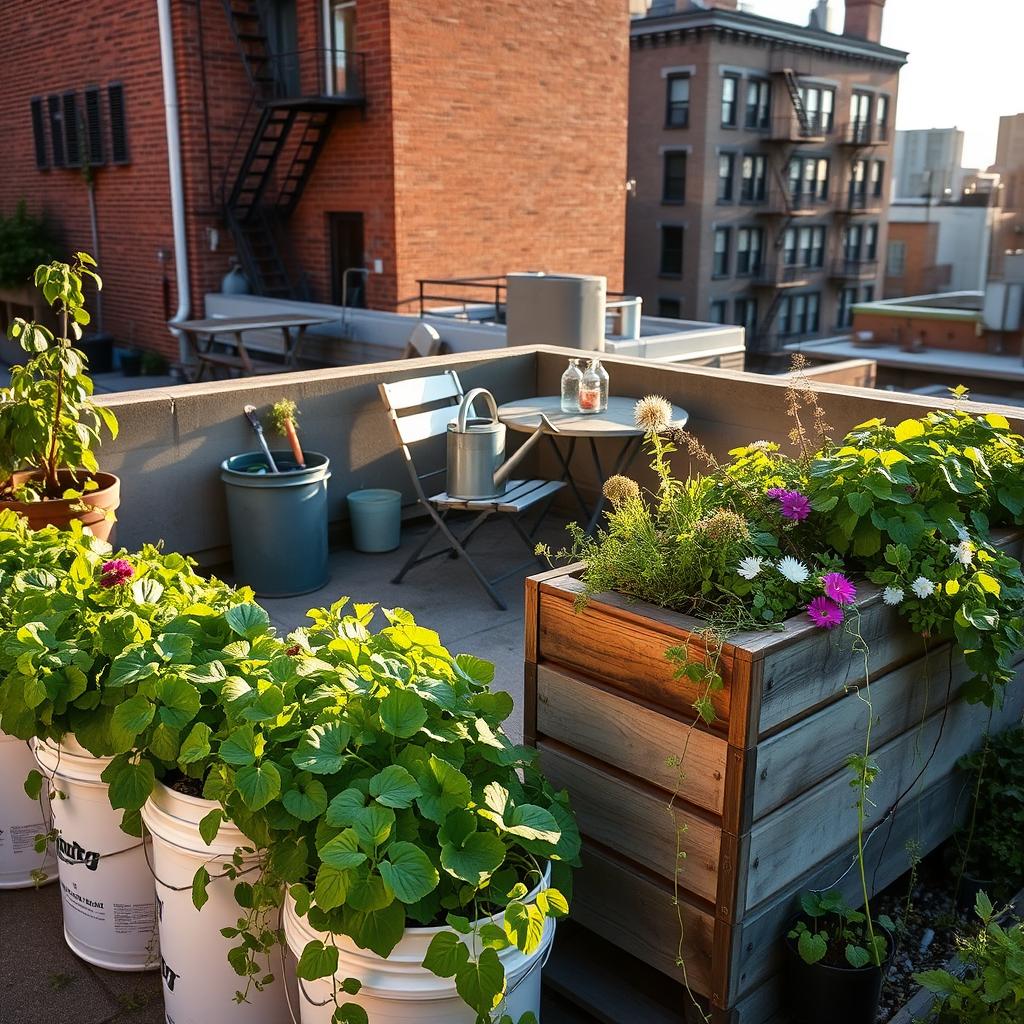
Benefits of Bucket Gardening
- Space-saving design perfect for urban gardening
- Cost-effective and affordable
- Mobile and flexible for optimal sunlight and weather protection
By using 5-gallon bucket gardening, you can enjoy growing your own plants, even in small spaces. It’s great for both seasoned gardeners and beginners. This method is perfect for small space gardening and helps you achieve your urban gardening goals.
Essential Materials for Your Bucket Garden
To start your 5-gallon bucket garden, you’ll need a few key items. First, grab the 5-gallon buckets. You can find them at most hardware stores or home improvement centers. If you love DIY, you can use these buckets for trellises or other supports.
Other important things you’ll need include a drill for drainage holes, a good potting mix, and your chosen plants’ seeds or seedlings. To make your bucket garden a success, make sure the soil drains well. Here’s what you’ll need to get started:
- 5-gallon buckets
- Drill with drill bits
- Quality potting mix
- Seeds or seedlings
- Trellises or other supports (optional)
DIY gardening is all about trying new things and being creative. With these materials, you’re ready to make a thriving bucket garden. Just remember to follow some gardening tips, like ensuring good drainage and using quality potting mix, to help your plants grow well.
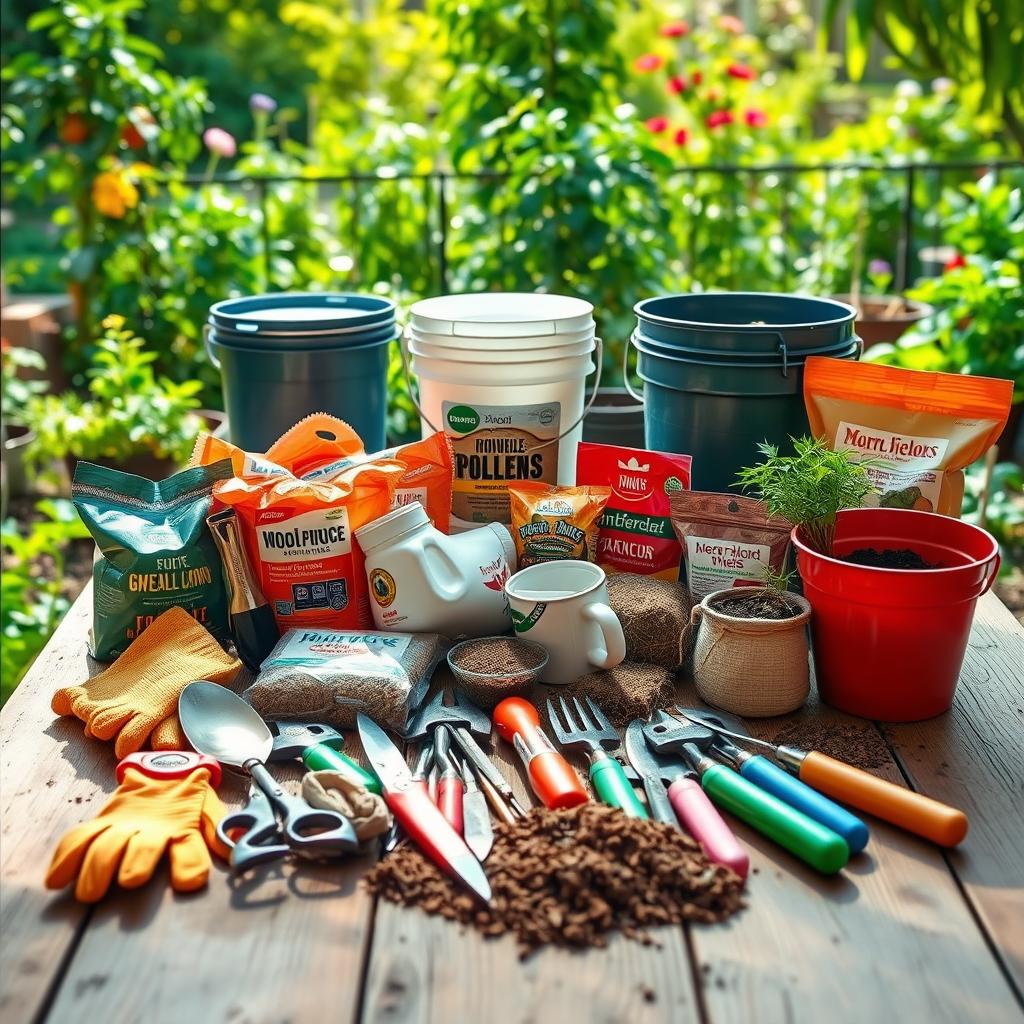
By following these easy steps and using the right materials, you can make a beautiful and productive bucket garden. It will give you fresh produce all season. Happy gardening!
Preparing Your 5 Gallon Buckets for Planting
Preparing your 5-gallon buckets for planting is crucial. You need to make sure they are clean, have good drainage, and are filled with the right soil. This will help your gardening ideas come to life.
First, drill holes in the bottom of each bucket for drainage. This step is key to avoid waterlogged soil and root rot. Then, clean and sanitize the buckets to prevent diseases. Use soap and water to scrub them, and rinse well.
After cleaning and drying, add a high-quality growing medium. Choose a mix made for containers. It should hold moisture but also drain well. Here are some tips:
- Choose a growing medium that is specifically designed for containers
- Leave enough space at the top of the bucket for watering
- Consider adding a layer of compost or fertilizer to give your plants a boost
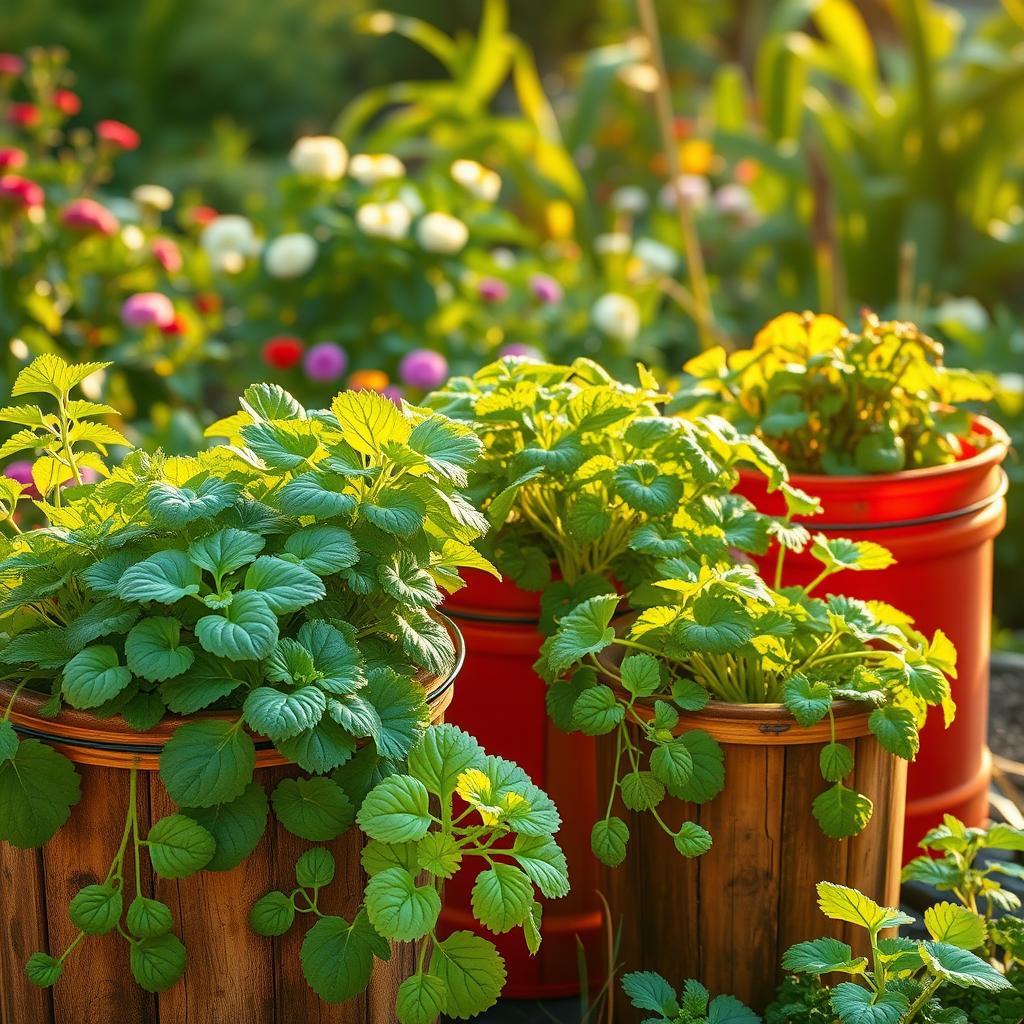
By following these steps, you’ll be well on your way to creating a thriving bucket garden. Remember to keep your gardening ideas flexible, and be willing to make adjustments as you go. With the right preparation and care, you’ll be enjoying a bountiful harvest in no time.
Best Soil Mix for Container Growing
Container gardening needs the right soil mix. It should drain well but hold moisture. Look for a mix made for containers, with peat moss, vermiculite, or perlite. This mix is key for your plants’ health and growth.
For container gardening, a quality potting mix is essential. Don’t use garden soil, as it can cause drainage issues. Choose a mix that gives your plants the right moisture and nutrients. A good mix should:
- Drain well to avoid waterlogged soil
- Keep enough moisture for plant growth
- Be porous for healthy root development
With the right soil mix, your container garden will flourish. Follow these tips for the best results in your container gardening.
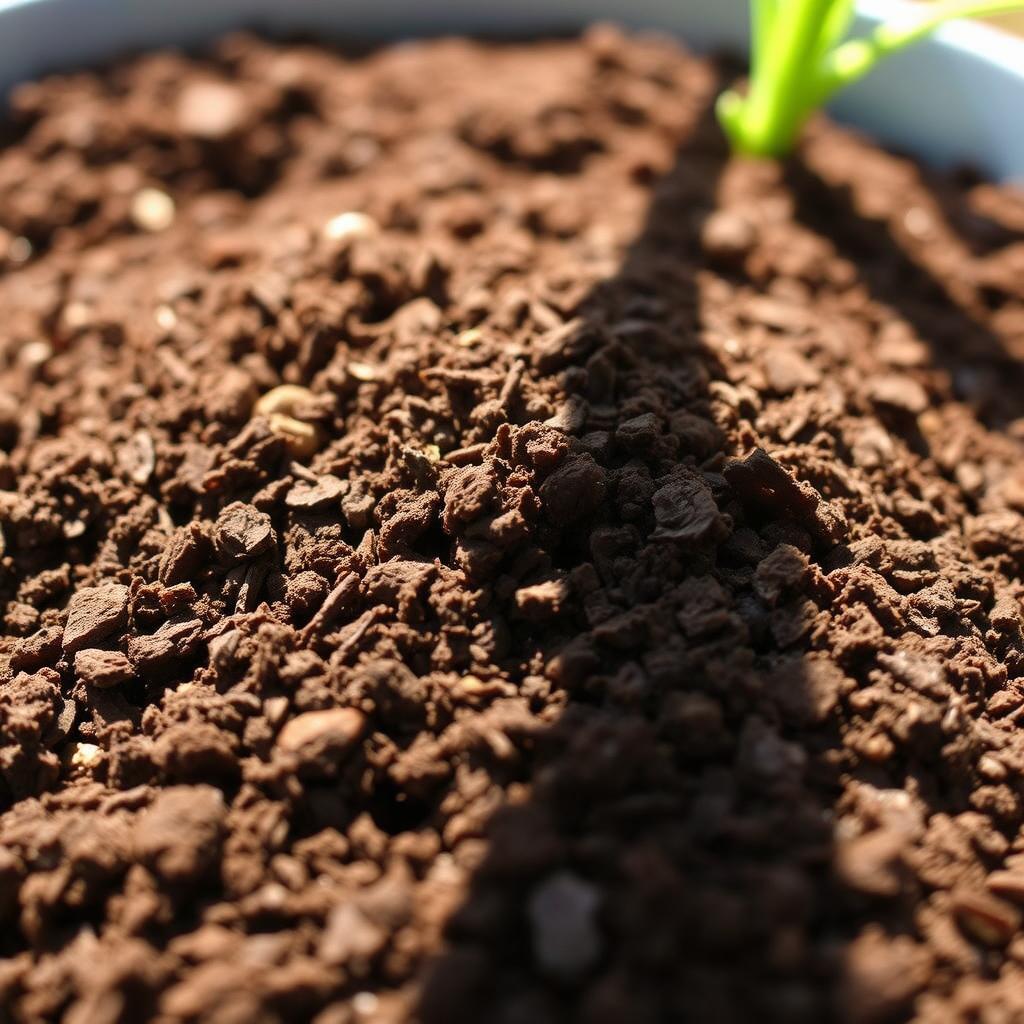
Top Vegetables That Thrive in 5 Gallon Bucket Gardens
5-gallon bucket gardens are great for growing veggies in small spaces. They are compact and efficient. This makes them ideal for small gardens.
Choosing the right veggies is key for container gardening. Some veggies need deeper buckets, while others prefer shallower ones. For example, carrots, beets, and radishes do well in deeper buckets. Leafy greens like lettuce, kale, and spinach prefer shallower buckets.
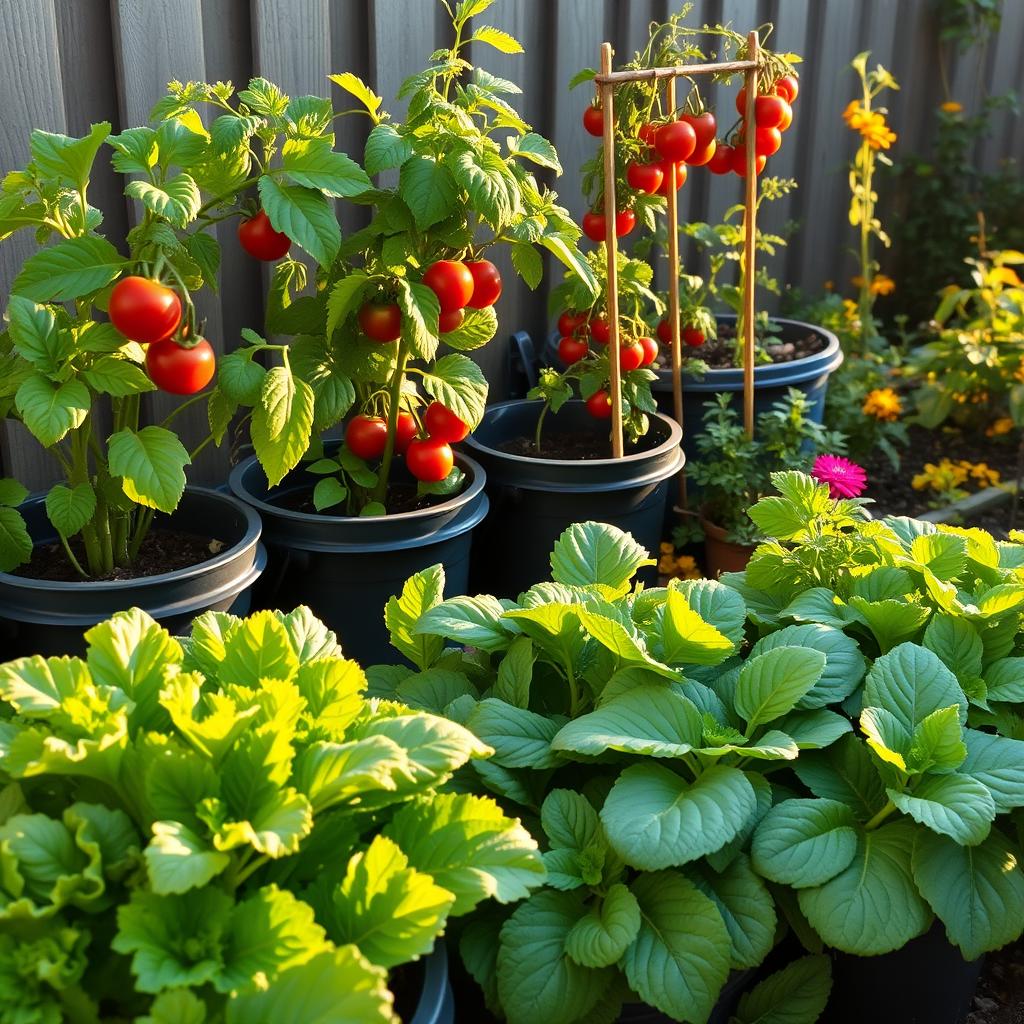
- Root vegetables: carrots, beets, radishes
- Leafy greens: lettuce, kale, spinach
- Fruiting plants: tomatoes, peppers, cucumbers
- Herbs and companion plants: basil, mint, cilantro
These veggies are perfect for small gardens and can thrive in 5-gallon buckets. By picking the right veggies and following some tips, you can have a successful garden.
Watering Techniques for Bucket Gardens
Watering is key in gardening. In a bucket garden, the soil should be moist but not too wet. A moisture meter helps you know when to water.
Setting up a self-watering system is a great DIY project. It makes sure your plants get the right amount of water. Here are some tips for watering your bucket garden:
- Check the soil moisture levels regularly
- Water your plants in the morning or evening to avoid evaporation
- Use a watering can or gentle spray to avoid washing away the soil
Every plant is different, and so is the weather. So, it’s important to watch and adjust your watering schedule. By following these tips, your bucket garden will stay healthy and vibrant.
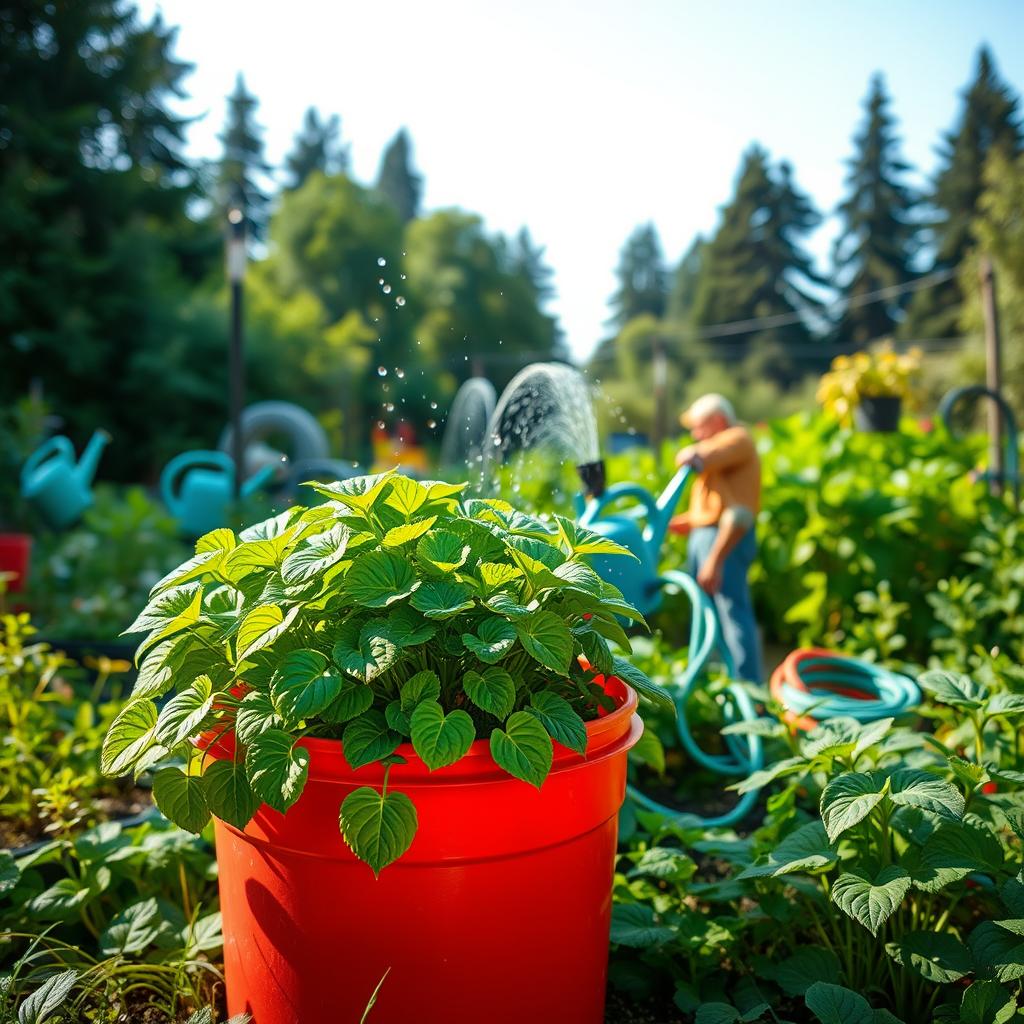
Natural Fertilizing Methods for Container Plants
Container gardening needs good fertilizing to grow healthy plants. Using natural methods is better for the planet. We’ll look at organic fertilizers and how to use them right.
Organic Fertilizer Options
For container gardening, you can choose from many organic fertilizers. Fish emulsion and bone meal are good choices. They’re full of nutrients for your plants. Compost tea is another option, made by soaking compost in water.
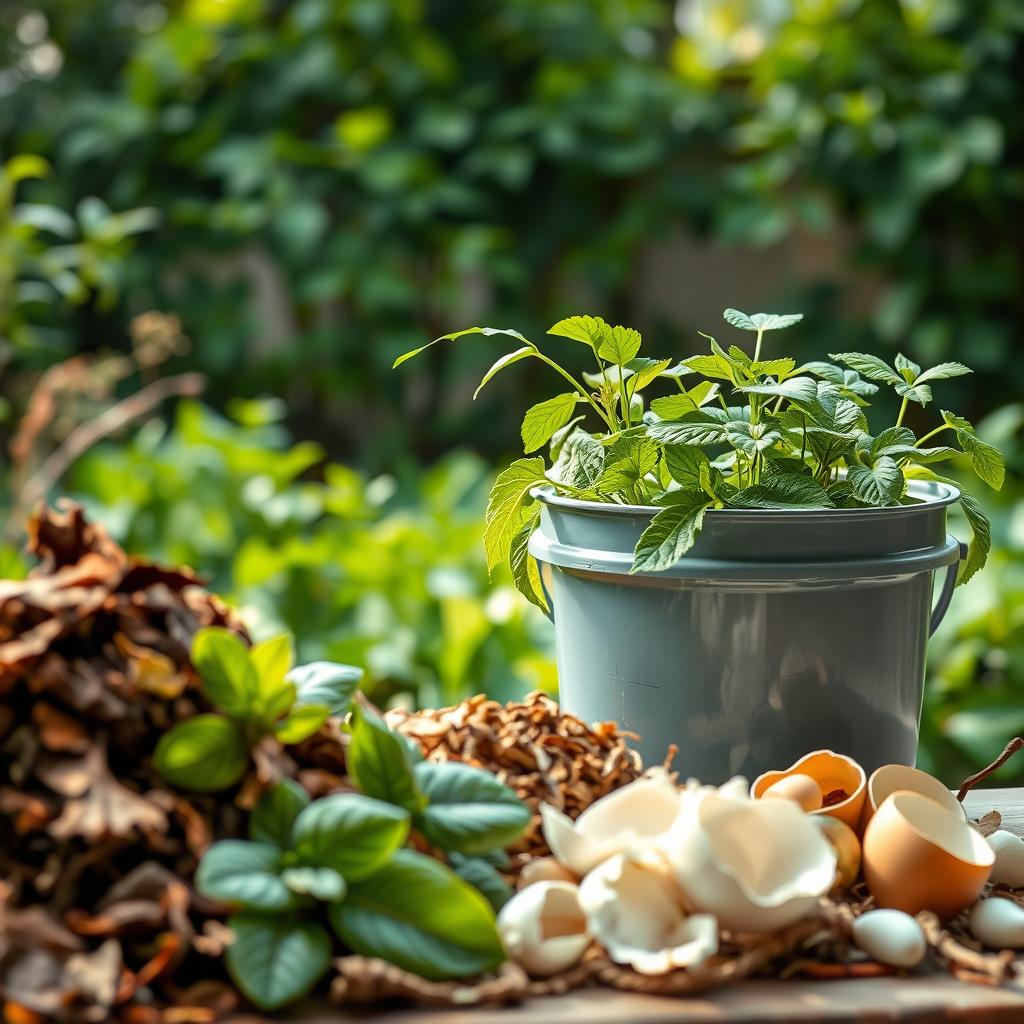
Composting for Containers
Composting is a great way to make a natural fertilizer for your garden. You can use food scraps, coffee grounds, and more. It’s good for your plants and helps reduce waste.
By using these natural methods, you can make your container garden healthy and full of life. Remember to fertilize often but lightly. With a bit of effort, you’ll get a great harvest from your garden.
Managing Pests in Your 5 Gallon Bucket Garden
When you care for your 5 gallon bucket garden, watch out for pests. In small gardens, it’s easier to spot and stop pests. One smart trick is to use companion planting to keep pests away. For instance, basil can keep aphids off tomatoes.
Preventing pests is crucial in small gardens. Check your plants often and act fast if you see any problems. Here are some ways to manage pests in your 5 gallon bucket garden:
- Look at your plants every day for signs of pests, like holes in leaves or white powdery spots.
- Try natural pest control like neem oil or insecticidal soap to fight infestations.
- Keep your garden tidy and weed-free to avoid attracting pests.
By following these tips and using companion planting, you can keep your garden healthy and pest-free. Stay alert and act quickly if you see pests. Soon, you’ll be enjoying a full harvest from your garden.
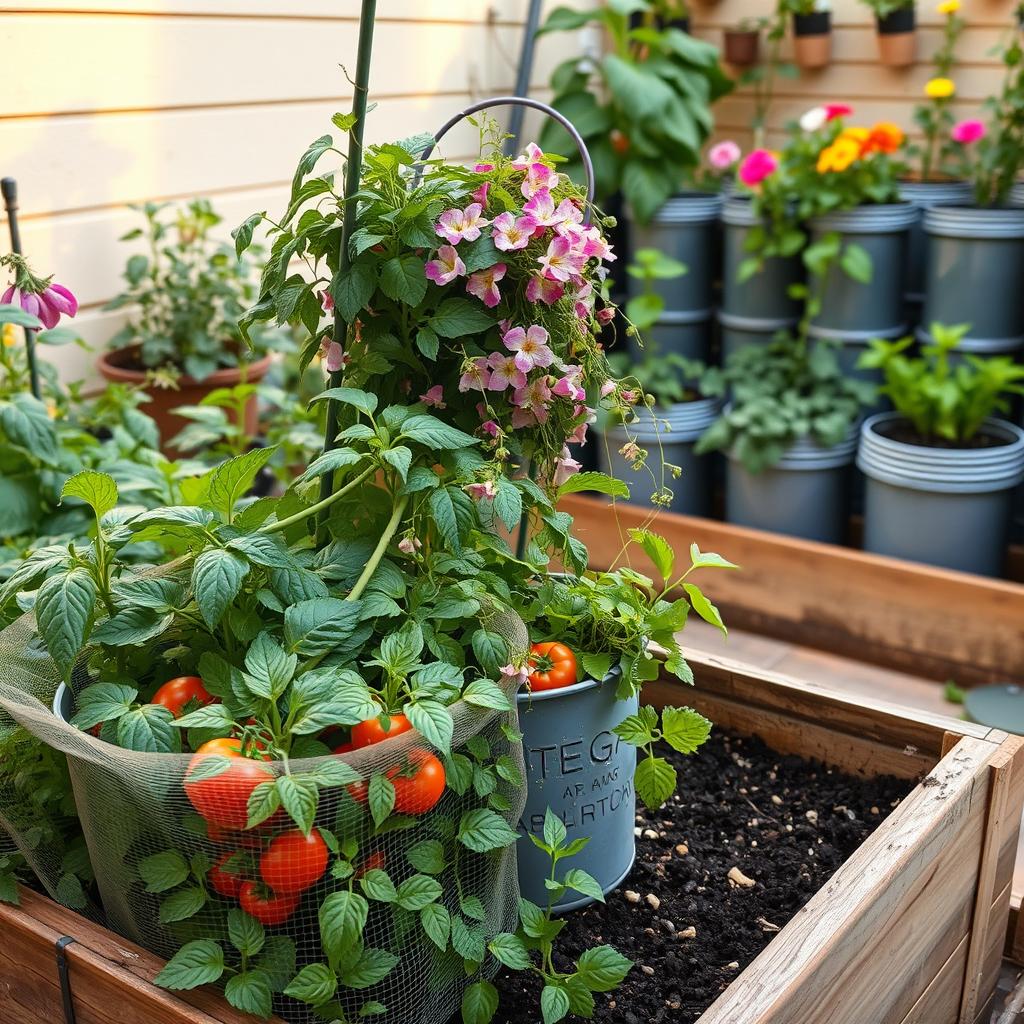
Seasonal Care and Maintenance Tips
As you keep working on your urban garden, it’s key to change your container gardening ways with the seasons. This helps your plants stay healthy and grow well all year. Knowing what your plants need in each season is very important for success.
To get ready for the seasons, you’ll need to adjust how you water, feed, and protect your plants. This helps them handle the changes in weather and temperature.

- Spring: Clean and refresh your containers, adding new potting mix and fertilizers as needed.
- Summer: Make sure your plants get enough water and food, and shield them from too much sun.
- Fall and Winter: Keep your plants safe from frost and think about moving them to a warm place, like a greenhouse or indoors.
By following these tips, your urban garden will keep growing, even when the seasons change. Always be ready to change your gardening ways to get the best results.
Creative Bucket Garden Arrangements and Designs
Exploring diy gardening opens up a world of creativity. You can transform your bucket garden into a stunning outdoor feature. The possibilities are endless, and your garden can truly reflect your style.
Vertical stacking is a great way to use space. You can stack buckets to create a tall garden. This adds beauty and maximizes your area. You can also pick buckets and plants that match in color and texture.
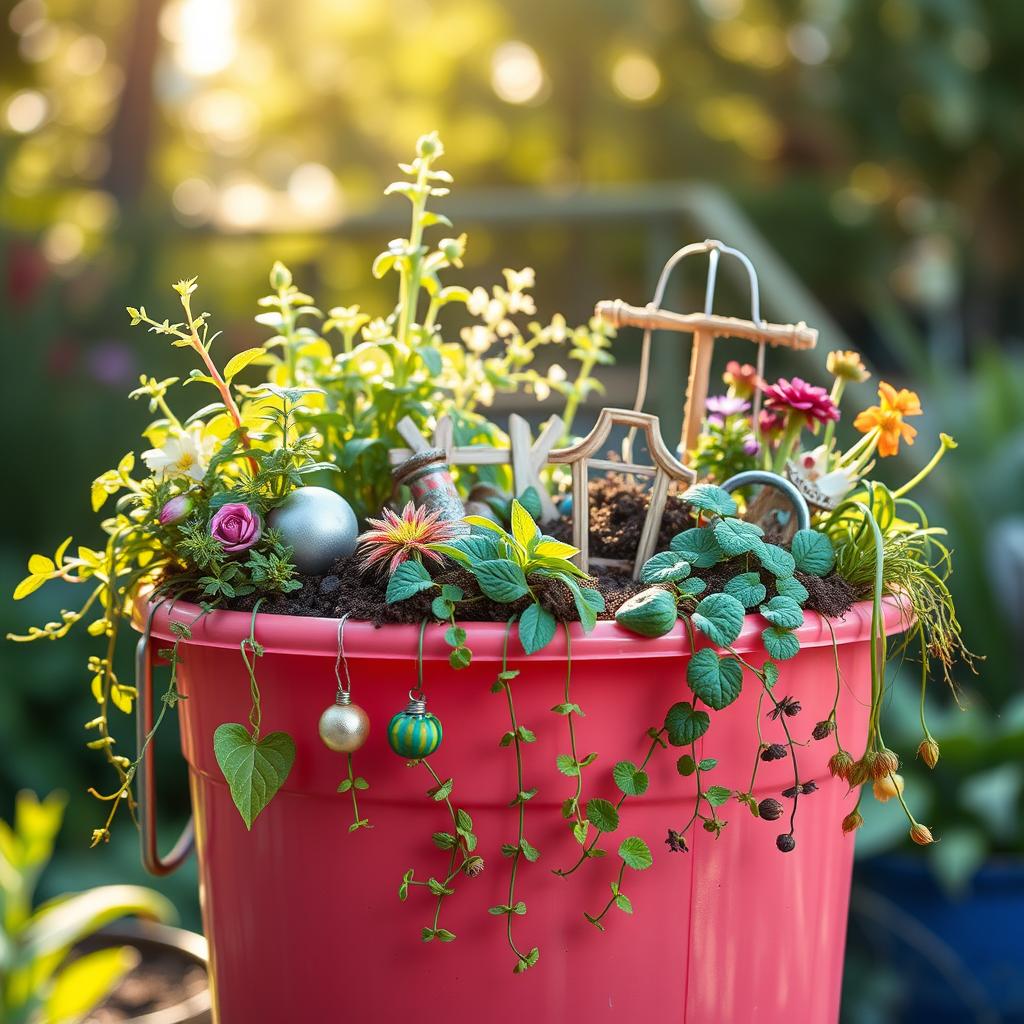
- Grouping buckets by plant type or color to create a cohesive look
- Adding decorative elements, such as ribbons or paint, to your buckets
- Creating a themed garden, such as a herb garden or a garden featuring only succulents
Being creative in your gardening can make your bucket garden unique. Whether you’re new to gardening or experienced, it’s a fun way to enjoy nature. With a bit of creativity, your garden can become a beautiful part of your outdoor space.
Common Mistakes to Avoid in Container Gardening
Starting your small space gardening journey? It’s key to know common mistakes that can slow you down. One big tip is to make sure your soil drains well. Waterlogged soil can cause root rot. Also, don’t overwater, especially in small spaces where soil is limited.
Don’t use regular garden soil. Instead, choose a potting mix made for containers. This helps avoid waterlogged soil and root rot. Here are more tips to remember:
- Use a potting mix specifically designed for containers
- Avoid overwatering, as this can lead to root rot
- Ensure proper drainage by adding a layer of small rocks or broken pottery at the bottom of the container
Follow these tips to make your small space garden flourish. Keep an eye on your plants and adjust care as needed. With practice and patience, you’ll become a pro at container gardening.
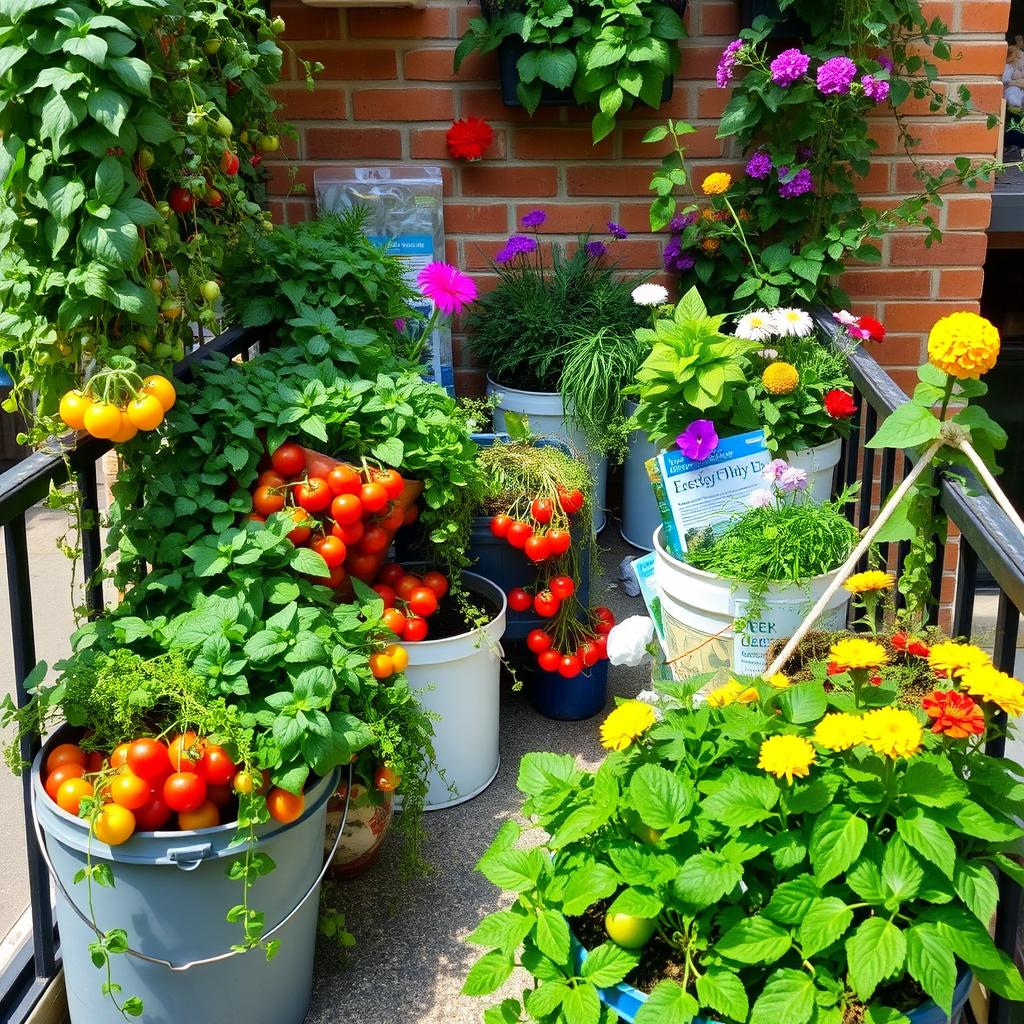
By watching out for these mistakes and avoiding them, you can have a beautiful, productive small space garden. Happy gardening!
Conclusion: Starting Your 5 Gallon Bucket Garden Journey
Starting your 5 gallon bucket garden opens up a world of possibilities. This method is perfect for growing food in small spaces. It’s great for both new and experienced gardeners.
Get creative with your garden. Try different plants and colors. Use vertical space to grow more in less room. With the right soil, water, and food, your garden will thrive.
Enjoy the fruits of your labor. Taste the fresh food you grow. Share your harvest with loved ones. Small gardens can make a big impact. Happy planting!
FAQ
What are the benefits of 5 gallon bucket gardening?
5 gallon bucket gardening saves space and is affordable. It’s also easy to move around. You can grow many plants in small areas like balconies or backyards.
What materials do I need to start a 5 gallon bucket garden?
You’ll need 5 gallon buckets, a drill, and potting mix. Don’t forget seeds or seedlings. You can also use old materials for supports.
How do I prepare my 5 gallon buckets for planting?
First, drill holes in the bottom for drainage. Clean and sanitize the buckets. Then, fill them with good growing medium, leaving room for water.
What is the best soil mix for container growing?
The best mix drains well but holds moisture. Look for a container mix with peat moss, vermiculite, or perlite.
What types of vegetables thrive in 5 gallon bucket gardens?
Many vegetables do well in bucket gardens. Root veggies like carrots and leafy greens like lettuce grow well. So do tomatoes and herbs.
How do I properly water my 5 gallon bucket garden?
Watering is key. Keep the soil moist but not too wet. Use a moisture meter and consider a self-watering system.
How can I naturally fertilize my container plants?
Use organic fertilizers like fish emulsion or bone meal. Composting is also good. Feed plants lightly and often.
How do I manage pests in my 5 gallon bucket garden?
Use companion planting to keep pests away. Check plants often and act fast if you see pests.
What seasonal care and maintenance tips should I follow for my bucket garden?
Spring: Clean and refresh buckets. Summer: Water and feed plants well. Fall and winter: Protect from frost and move plants if needed.